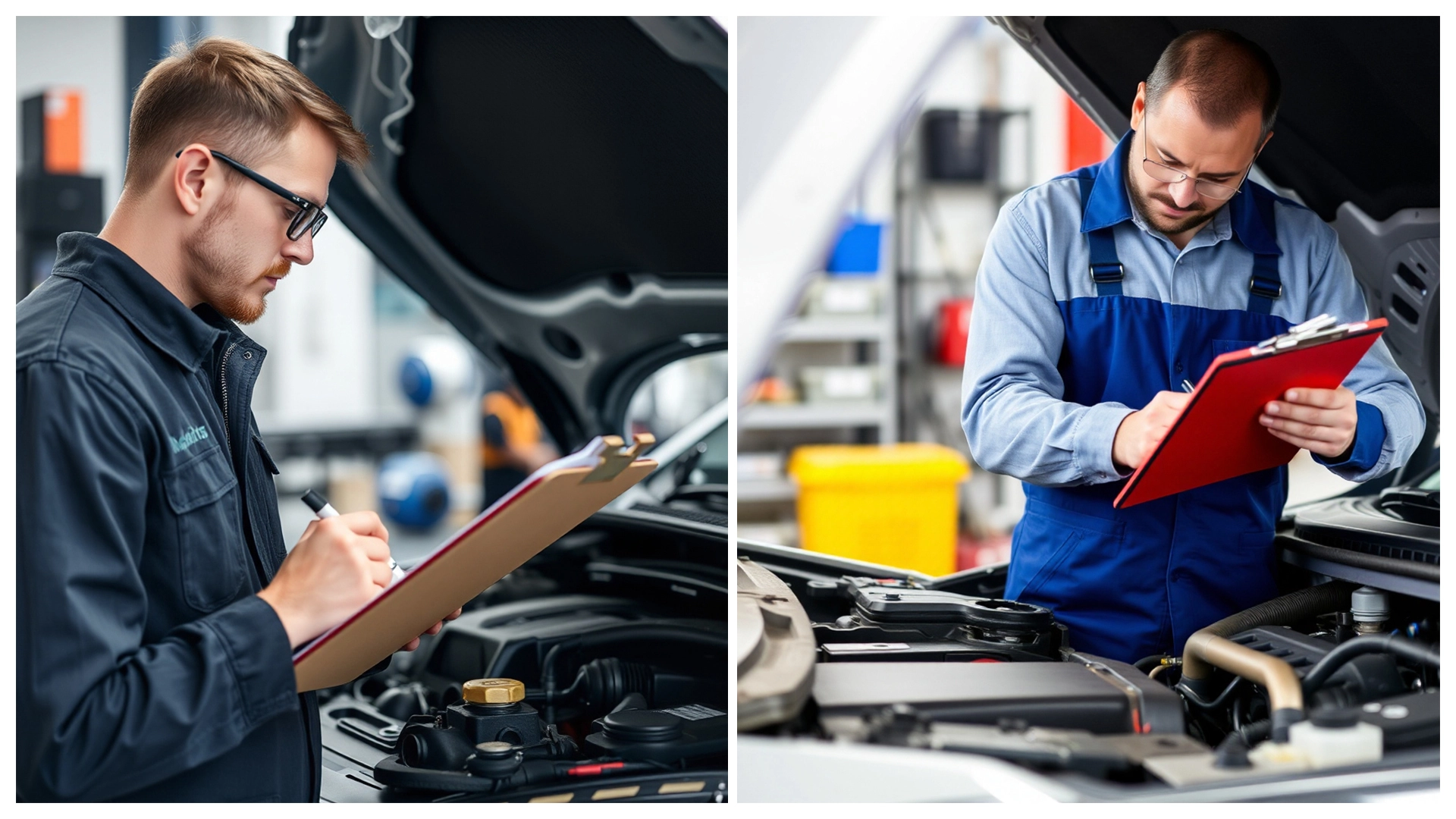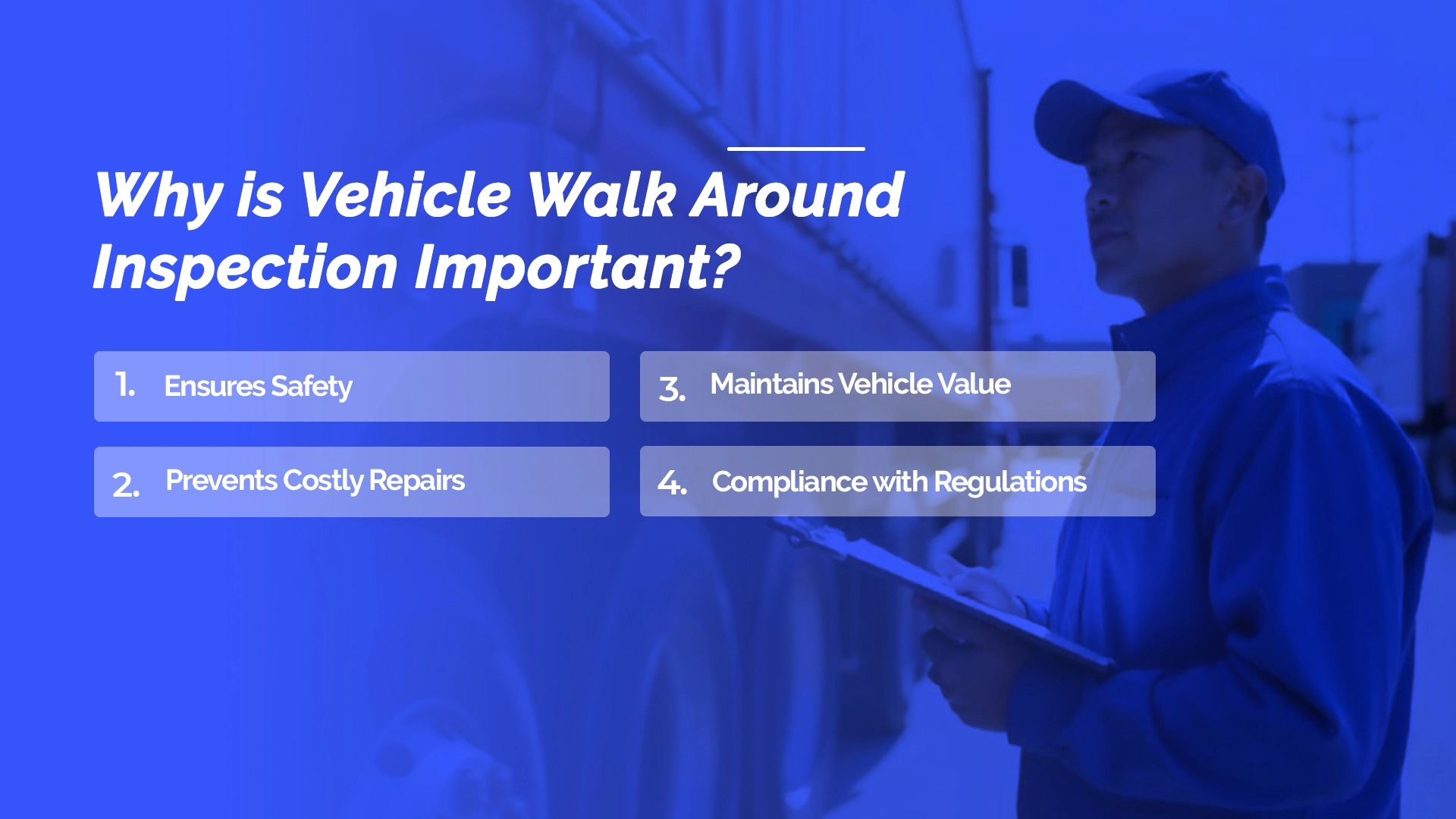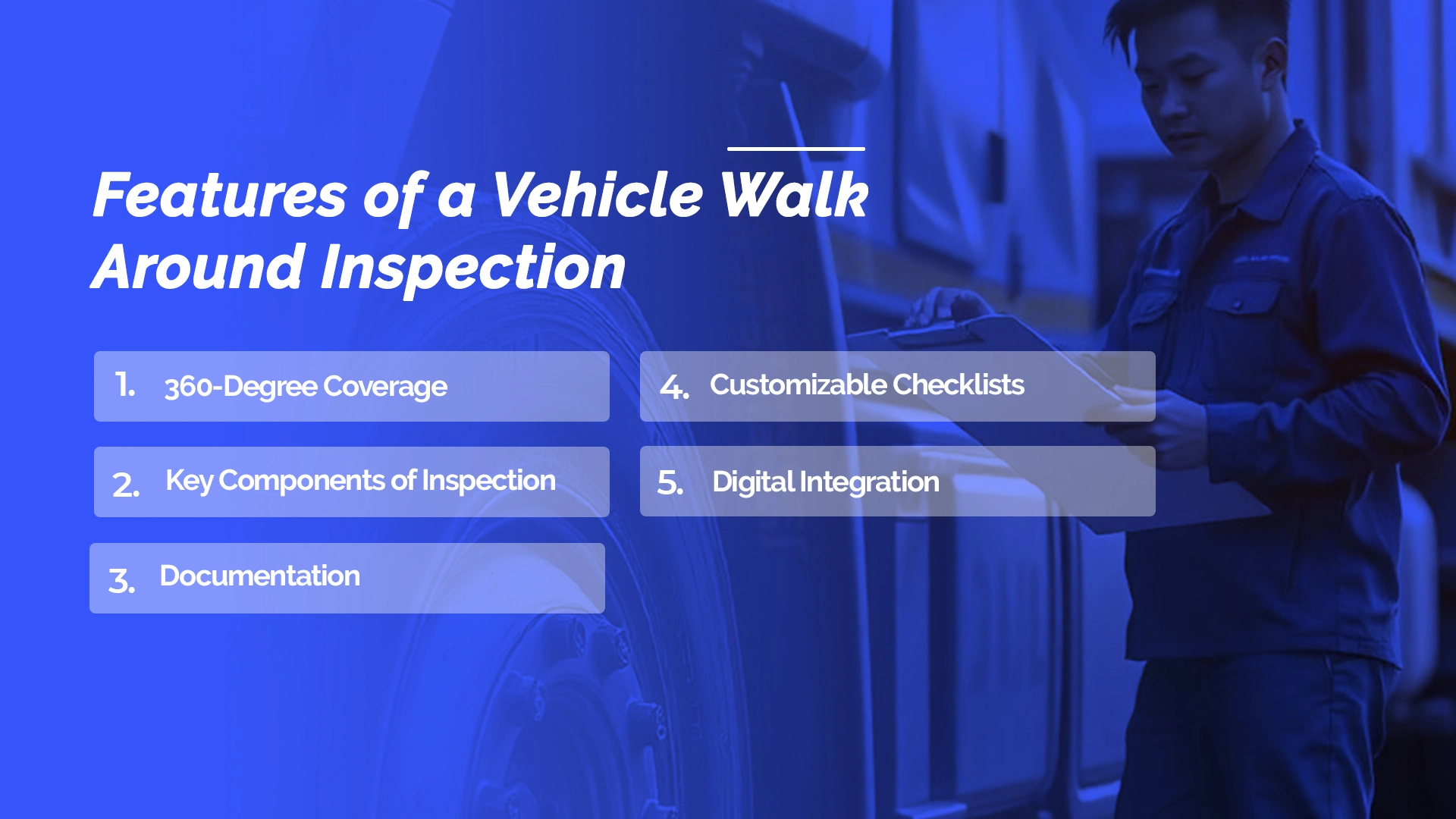Have you ever taken a 360-degree walk around your vehicle before going out for a drive? Most of us haven’t! However, doing a vehicle walk-around inspection is of the utmost importance. It can significantly increase the productivity and safety of your car and the elements around it.
Conducting a vehicle walk-around inspection is a crucial step among the different maintenance procedures.
This blog has examined what a vehicle walkaround inspection includes, its importance, main characteristics, reasons for performing it, effective steps to execute it, and how Spyne can simplify the process for you. Read on to understand
What is a Vehicle Walk-Around Inspection?

A vehicle walk-around inspection is a manual visual assessment of a vehicle’s interior and exterior condition. In layman’s terms, it involves walking around the vehicle and inspecting it for any signs of dents, wear and tear, or damage, checking the driveway for any material that might puncture the tire, and any animal like cats and dogs resting beneath your vehicle or any kid playing in front.
This inspection also includes checking the tires, body panels, lights, mirrors, windows, and other visible parts, as well as the vehicle’s interior for cleanliness and functionality.
It’s commonly performed by fleet managers, rental agencies, dealerships, and even individual vehicle owners.
A 360 walk around vehicle inspection takes this concept further by providing a comprehensive, detailed view of the vehicle from all angles, ensuring that every potential issue is identified and documented.

Why is Vehicle Walk Around Inspection Important?

1. Ensures Safety
A vehicle walk around inspection or 360 car view can help you identify any potential safety hazards, like worn-out tires or broken lights, before they lead to accidents or breakdowns. With the help of 360 walk around vehicle inspection, you can act proactively and mitigate risks for drivers, passengers, and pedestrians.
2. Prevents Costly Repairs
By conducting a walkaround inspection you can identify minor issues and this will allow for timely repairs, which can prevent more expensive problems in the future. For instance, addressing a small crack in the windshield is better and more cost-effective than replacing it entirely.
3. Maintains Vehicle Value
Doing a simple vehicle walkaround regularly can increase the life of your vehicle. Maintaining your vehicle ensures it remains in good condition, preserving its resale or trade-in value. A well-maintained vehicle is more appealing to buyers or lessees.
4. Compliance with Regulations
Fleet operators and commercial vehicle owners are often required to conduct regular inspections to comply with legal and safety regulations. A thorough walk around inspection checklist ensures adherence to these requirements.
Features of a Vehicle Walk Around Inspection
A vehicle walk around inspection has several features that are designed to perfectly assess your vehicle’s condition. The following are the key aspects of 360-degree car walkaround inspection.

1. 360-Degree Coverage
When you move through 360 walkaround vehicle inspection it captures the entire vehicle from every angle, leaving no area unchecked. This ensures that all the problems are detected and there is no room for any mishaps.
2. Key Components of Inspection
- Exterior- When checking the exterior of the vehicle, you must check tires, rims, lights, mirrors, body panels, and windows. You must also check the areas in and around these elements. For example, if there is any nail or a screw. If there is any debris stuck, check for that and get it fixed.
- Interior- Before starting to drive, you must also check the seats for adjustments, the dashboard, controls whether they are working properly, and last but not least cleanliness of the car, to increase the value of the vehicle.
- Functional Aspects- This is also another important aspect when taking a 360 walkaround inspection. In this you must have a look at the horn whether they are working or not, wipers are smooth or not, air conditioning, and more.
3. Documentation
An effective walk around inspection involves recording the findings. A vehicle walk around inspection form ensures consistent documentation, making it easier to track and address recurring issues.
4. Customizable Checklists
The walk around inspection checklist can be tailored to suit specific vehicles, industries, or purposes.
5. Digital Integration
Advanced tools allow for digital documentation, providing efficiency and accuracy in recording and sharing inspection data.
Why Conduct Vehicle Walk Around Inspection?
We have enlisted the reasons for you to do a Vehicle Walk Around Inspection.
1. Prevention of Accidents
If you want to prevent accidents caused by mechanical failures and 360-degree walkaround is something that you should always do. A walk around inspection identifies problems like under-inflated tires, malfunctioning lights, or fluid leaks, preventing accidents.
2. Optimized Fleet Management
When you are working as a car dealer, a vehicle walk around inspection ensures every vehicle is roadworthy, minimizes downtime, and helps you to gain more profit.
3. Enhanced Customer Experience
When the vehicle is well inspected, it ensures that there is no room for damage. Rental and leasing companies can acquire customers by delivering vehicles that are well-inspected. This reduces disputes over pre-existing damages.
4. Insurance and Warranty Claims
The first thing that any consumer looks for is proper documentation of the cars. When proper documentation of the vehicle’s condition is there through an inspection form, it simplifies claims and reduces the chance of disputes with insurance companies and manufacturers.
5. Sustainability
360-degree walkaround inspection helps you to identify issues like excessive fuel consumption or emissions that help to ensure the vehicle operates efficiently, contributing to environmental sustainability.
How to Perform a Vehicle Walk Around Inspection
To make it easier for you we have laid down a walk-around inspection checklist for you that will help you in conducting a thorough walk around inspection.
Step 1: Gather Necessary Tools
To conduct a thorough vehicle walk around inspection, start by gathering all necessary tools. You must have the right equipment as it is crucial for an effective inspection process.
These tools will help maintain consistency and professionalism throughout the inspection.
Step 2: Perform a 360-degree Inspection
Start the examination of the vehicle by taking a thorough 360-degree walk around it. Carefully inspect each visible part, focusing on the body panels, trim, and general state.
Pay close attention to the tires by verifying their pressure, gauging tread depth, and examining for irregular wear that could potentially point to alignment problems.
Remember to thoroughly examine the windshield and all windows for any signs of damage, including cracks, chips, or scratches.
Step 3: Examine Functional Components
Prioritize testing every functional component to guarantee correct functionality. This involves a detailed inspection of all lighting elements, such as headlights, taillights, blinkers, and hazard lights.
Test the horn to ensure it is functioning properly, and make sure the windshield wipers are operating smoothly. Inspect all mirrors to ensure they are positioned correctly and working properly. Furthermore, examine the levels of all fluids, such as engine oil, coolant, and windshield washer fluid, and refill as needed.
Step 4: Inspect the Interior
Proceed to the interior inspection, where you will assess the state and efficiency of the cabin elements. Examine every seat to confirm it can be adjusted correctly and ensure all seat belts retract and latch properly.
Check that all dashboard warning lights turn on when you start the vehicle and ensure that all controls, such as climate control and entertainment systems, are working properly. Be alert for any strange smells or signs of damage that could point to potential problems.
Step 5: Document Findings
Documentation plays a vital role in the inspection procedure. Utilize your vehicle inspection form or digital tools to document all observations in a structured manner.
Capture well-lit photos of any damage, wear, or concerns you come across. These documents will be useful for monitoring the car’s status as time goes on and can act as crucial proof if required for insurance or maintenance reasons.
Step 6: Address Issues
Moreover, Following the inspection, rank identified issues according to severity and safety concerns. Develop a specific strategy to deal with these worries, arrange prompt fixes for critical safety issues, and organize future upkeep for less pressing concerns.
Clearly convey these discoveries and suggestions to all pertinent individuals, guaranteeing that essential repairs are planned and executed promptly.
How Spyne Can Help in Vehicle Walk Around Inspection
Spyne offers advanced cutting-edge, never seen before and digital solutions to transform your vehicle walk around inspection process. Here’s how Spyne can assist and get you best results for your vehicle inspection:
1. AI-Powered 360 Vehicle Inspection
Spyne uses advanced AI tools to enable a 360 walkaround vehicle inspection, offering unparalleled accuracy in capturing every detail of the vehicle. It helps you see inside and outside of the car, within just a few clicks.
2. Customizable Digital Checklists
Spyne has room for customizable assets. You can easily customise digital walk around inspection checklists and ensuring all necessary components are evaluated.
3. Automated Documentation
The documentation process at Spyne automates the documentation process, creating detailed reports that are easy to share, read and store.
4. High-Quality Imaging
5. Seamless Integration
Spyne’s platform integrates easily with existing fleet management or rental systems, enhancing operational efficiency.
6. Enhanced Customer Experience
With Spyne, businesses can provide transparent, accurate vehicle condition reports, building trust and credibility with customers.
Conclusion
A vehicle walk-around inspection goes beyond a regular check and acts as a preventive measure to guarantee vehicle safety, reduce costs, and improve performance. If you are a fleet manager, a rental agency, or a vehicle owner, it is essential to include this method in your maintenance plan.
By utilizing tools of Spyne, you can greatly enhance the efficiency and accuracy of the inspection procedures. The options vary from conducting a 360-degree vehicle check to using a complete walk-around inspection list.
Start your journey towards safer and properly maintained vehicles now. Regularly conduct walkaround inspections on vehicles to reap the rewards of a secure, economical, and reliable fleet or personal vehicle.
Include tires, lights, mirrors, windows, body panels, fluid levels, brakes, horns, dashboard warnings, seats, and emergency tools like a spare tire and first-aid kit.



















